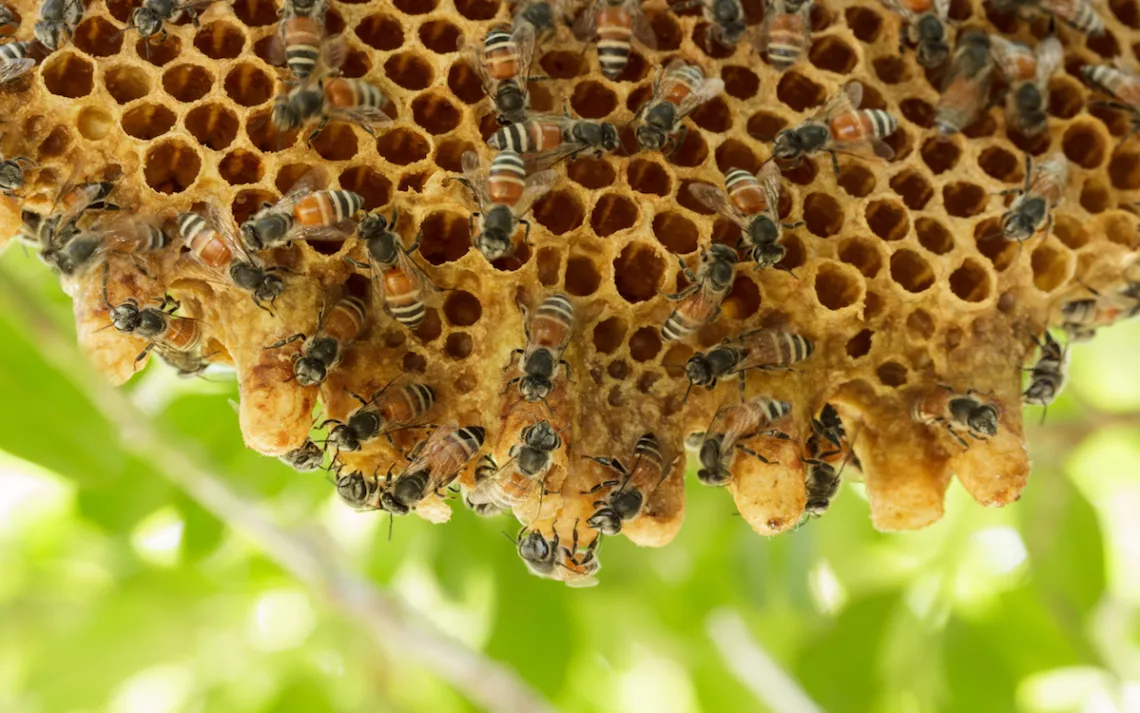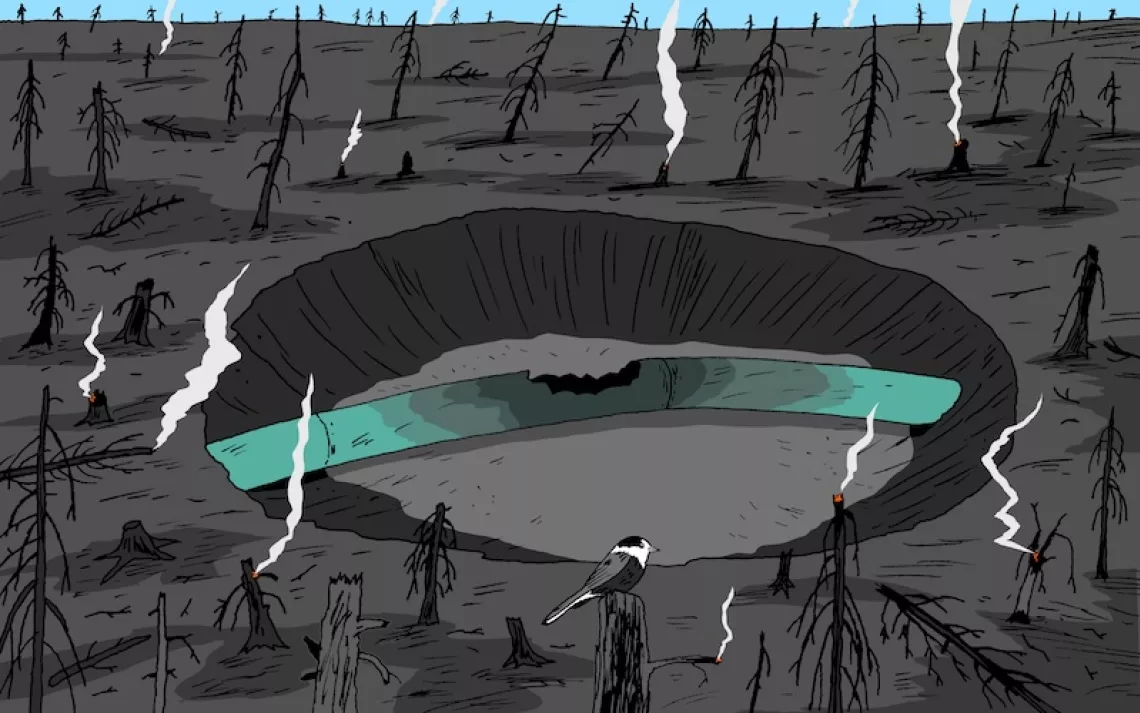Why Are Honeybees Dying Off?
According to Mr. Green, it's complicated

Photo by nayneung1/iStock
A: We’re pretty certain that bees are not dying from GMOs, cellphones, ultraviolet lights, electromagnetic radiation, or aliens, all of which have been blamed at one point or another. There is no single cause, according to most scientists who have studied the problem, but rather a combination of factors that include parasites, pathogens, pesticides, poor nutrition, and habitat loss.
One of the greatest threats to honeybees is industrial agriculture’s widespread use of pesticides. According to one study, nearly two-thirds of hives surveyed in Canada and the United States contain at least one synthetic pesticide. The most worrisome is a class of insecticide called neonicotinoids, which have been found to short-circuit bees’ memory and navigation. Neonicotinoids—which are often coated on the seeds of crops including canola (or rape seed) that many honeybee colonies rely on for pollen—include Acetamiprid, Clothianidin, Dinotefuran, Imidacloprid, Nitenpyram, Thiacloprid, and Thiamethoxam. The EPA announced in 2016 that Imidacloprid, a widely used neonicotinoid insecticide, “potentially poses risk to hives when the pesticide comes in contact with certain crops that attract pollinators.”
The aptly named parasite Varroa destructorrepresents a second significant threat, especially for colonies that have already been compromised by pesticide exposure. The varroa mite sucks out bees’ “blood” while also transmitting a virus that deforms the insects’ wings. Varroa mites were accidentally brought here in 1987 from Asiatic bees and have spread to most of the world. While there a number of miticides that beekeepers can use to try to beat back varroa mite infestations, they aren’t always effective, leaving bees susceptible to the deadly mites.
Another factor is that bees’ diets are not exactly health foods, but often consist of junk food in the form of sugar or corn syrup, which do not contain pollen that stimulates resistance to disease. Finally, there has been a reduction in the variety of flowers on which bees feed because of monocultural farming and suburban development. Add up all these factors—and others—and the weakened bees have an uphill battle.
Although the problem of colony collapse is still very serious, the problem may be abating somewhat. According to a report from the US Department of Agriculture, in April 2017 the number of commercial U.S. bee colonies had risen by 3 percent (to 2.89 million) compared with 2016, while the number of hives lost to colony collapse disorder was down by 27 percent from a year earlier.
This article has been corrected since its original posting, which inaccurately reported that some beekeepers use neonicotinoidsto control mites.
 The Magazine of The Sierra Club
The Magazine of The Sierra Club







